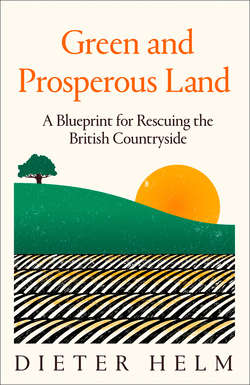Читать книгу Green and Prosperous Land - Dieter Helm, Dieter Helm - Страница 18
More people
ОглавлениеBritain is one of the most densely populated countries in the world, even though large areas are sparsely inhabited. There are the great conurbations, and then there are the Scottish mountains, the Pennines and mid-Wales. Although London and the surrounding area is being overtaken in scale by the mega cities of Southeast Asia, the southeast is as densely populated as parts of the Netherlands and Hong Kong. The corridor that runs north to Birmingham and Manchester is dense too, and HS2 will make it more so. The new Oxford–Cambridge corridor, with more than 1 million new houses planned, is going to add another dense conurbation. The clamour to build on the Green Belt is getting ever louder.
In the 1970s and especially the 1980s, the assumption was that Britain’s population would peak and then perhaps gradually decline, and in the process it would age. The assumption was that Britain would go the way of Japan and Germany – with an ageing, static or even declining population. British women have already gone through the so-called ‘demographic transition’, and the silver lining to the silver age should be less pressure on resources. The depopulation of the rural areas that followed the great urbanisation of Britain in the nineteenth century, indeed since the enclosures, would continue relieving environmental pressures. We could, it was thought, become an older, less populated and greener country.
This has been turned on its head by immigration. For much of its recent history, and especially in the nineteenth century, Britain exported people (and Ireland more so). The displaced rural populations colonised the USA, Canada, Australia and New Zealand, and countries throughout the British Empire. It was the safety valve as mortality rates fell.
Britain started the twentieth century with a population of around 25 million, and ended it with around 60 million. Nature was bound to suffer as a result, especially as the 60 million were many times wealthier than the 25 million. Immigration picked up as the Empire slowly wound down, with notable flows from the Caribbean and then Uganda and East Africa, and from India and Pakistan.
The initial numbers were quite small, but the game changed in the twenty-first century. European immigration was added to the non-Europeans, notably after 2004 when the Eastern European countries joined the EU, and freedom of movement applied to them. Britain made few objections at the time, and assumed that immigration from Eastern Europe would be marginal – perhaps 50,000 per annum – and would enhance economic growth.
The immigration figures started to edge up from the mid-2000s, reaching a gross 600,000 per annum in 2014/15, with net migration peaking at over 300,000. Such levels are unprecedented in British history. Net migration is still around 250,000 per annum (the average since 2004), with non-Europeans taking up the slack as European net migration falls.13
Few societies find it easy to cope with what now could be described as mass immigration, and for Britain it was a crucial factor leading to the Brexit vote. The political ambition is clearly now to limit the number of European immigrants. Whether this objective is met, those who are here in the main expect to stay, and there will still be positive net immigration for years, and perhaps decades, from non-European countries.
There are two effects on the natural environment. The first is the aggregate resources, including housing and infrastructure, that will be required to address the needs of a growing population. The second is the impact on composition. By 2020 the population is expected to reach 67 million, rising to 77 million by 2050.14 Although this population will continue to age, it will have more young people than anticipated a couple of decades ago. The European immigrants have turned out to be young and well educated. For the European and non-European immigrants, birth rates are typically higher than for the rest of the population. We have built population growth into the long term.
Without mitigating action now, the environmental consequences of some 10 million extra people will be a repeat of what happened throughout the twentieth century. They will place 10 million more demands on the environment for consumption – for water, energy, housing and food. They will have a higher standard of living than those in the twentieth century, and therefore they will consume more per head. This is the equivalent to adding one more London, and one that is wealthier at that. None of this suggests that immigration is a bad thing: these extra people would have an environmental impact wherever they live, just as we do. The important point is that if we want a green and prosperous land, we have to factor in the inevitable consequences of a growing population.
